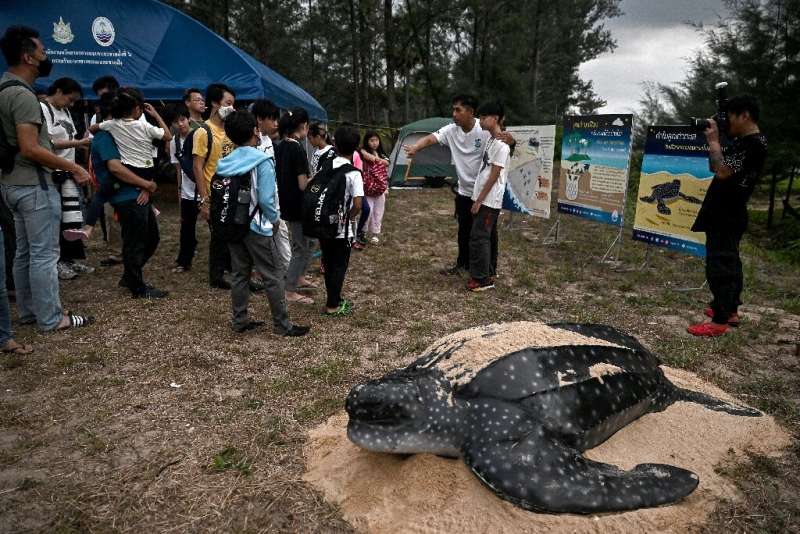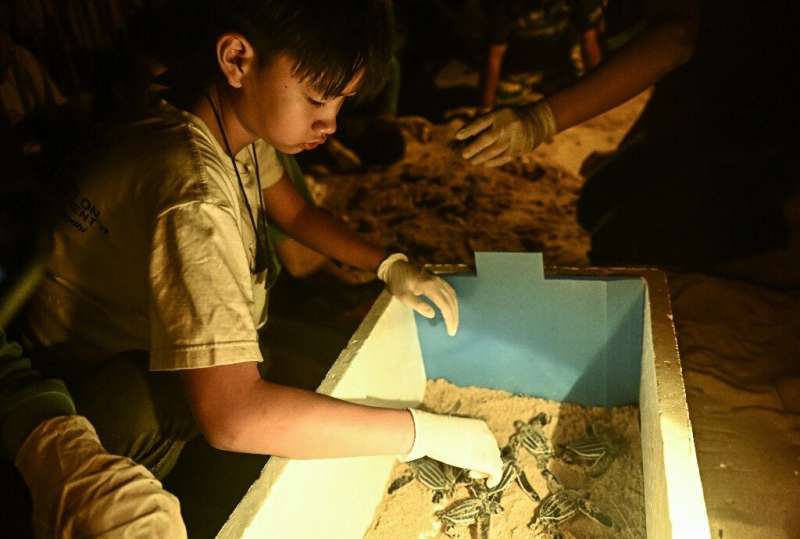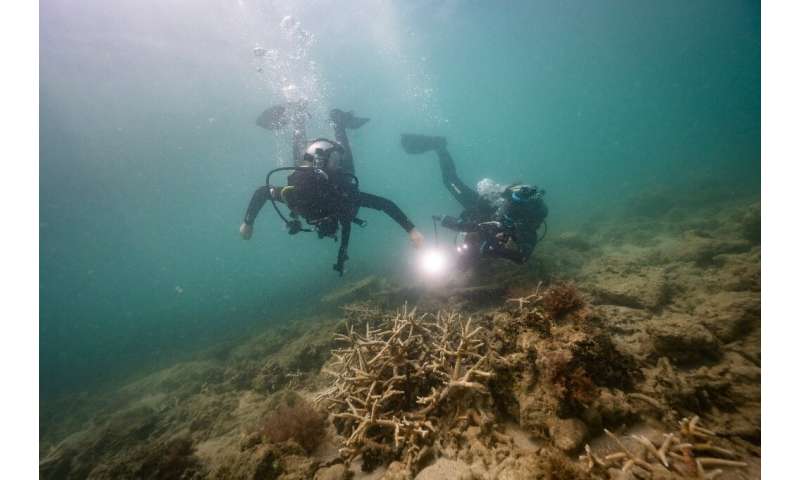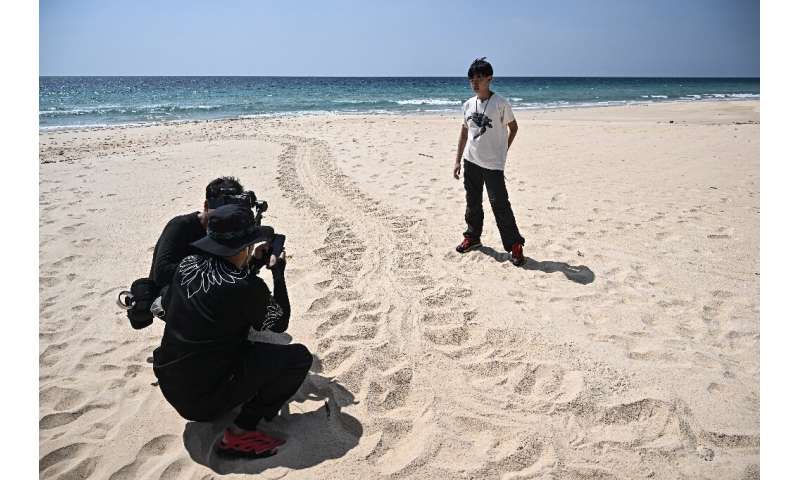by Sarah LAI

Leatherbacks are the world's largest sea turtle and a rarity in Thailand thanks to habitat loss, plastic pollution and consumption of their eggs.
It is past midnight on a beach in southern Thailand and 12-year-old Prin Uthaisangchai is anxiously staring at a leatherback turtle nest, waiting for scores of the endangered hatchlings to scrabble out from the sand.
The Bangkok secondary school pupil is producing a short documentary about the snappers, under a programme run by the Environmental and Social Foundation, an NGO working to educate children about conservation.
That morning a team of marine biologists noticed the sand covering one of the leatherback nests on Phang Nga beach was beginning to sink in on itself.
That was a telltale sign the eggs buried inside were starting to crack and that sometime that night the hatchlings would emerge and make a dash to the ocean under the cover of darkness.
But after more than 20 hours with no sign of any baby turtles, Prin and the team grew worried.
Donning plastic gloves, they carefully dug into the nest to give each squirming critter a helping hand into the world.
Soon the tiny turtles were scrambling towards the shore where waves swept in, taking them into their new ocean home.
"I feel very disappointed how we have to interfere with a natural living thing that shouldn't need a human's help," said Prin.
"But in the end, we have to help."
It is past midnight on a beach in southern Thailand and 12-year-old Prin Uthaisangchai is anxiously staring at a leatherback turtle nest, waiting for scores of the endangered hatchlings to scrabble out from the sand.
The Bangkok secondary school pupil is producing a short documentary about the snappers, under a programme run by the Environmental and Social Foundation, an NGO working to educate children about conservation.
That morning a team of marine biologists noticed the sand covering one of the leatherback nests on Phang Nga beach was beginning to sink in on itself.
That was a telltale sign the eggs buried inside were starting to crack and that sometime that night the hatchlings would emerge and make a dash to the ocean under the cover of darkness.
But after more than 20 hours with no sign of any baby turtles, Prin and the team grew worried.
Donning plastic gloves, they carefully dug into the nest to give each squirming critter a helping hand into the world.
Soon the tiny turtles were scrambling towards the shore where waves swept in, taking them into their new ocean home.
"I feel very disappointed how we have to interfere with a natural living thing that shouldn't need a human's help," said Prin.
"But in the end, we have to help."

Bangkok secondary school pupil Prin Uthaisangchai is producing a short documentary about leatherback turtles to raise conservation awareness.
Reclaiming the beaches
Leatherbacks—the world's largest sea turtle weighing up to 500 kilogrammes—are a rarity in Thailand thanks to habitat loss, plastic pollution and consumption of their eggs.
The creatures are listed as vulnerable globally on The International Union for Conservation of Nature Red List, with many sub-populations deemed critically endangered.
The pandemic allowed the turtles to reclaim beaches usually packed with tourists, with marine biologists recording an increase in nests.
Better protections for the creatures have also helped. Thailand banned poaching their eggs in 1982, and locals are now awarded 20,000 baht ($570) for reporting a leatherback nest—like the one closely watched by Prin under the moonlight.
But only 87 hatchlings from 126 eggs in the nest survived their short journey to the sea.

The pandemic allowed the turtles to reclaim beaches usually packed with tourists, with marine biologists recording an increase in nests.


Prin spent two years visiting Thailand's southern coast to research the animal's habitat, interview experts and chase turtle tracks on beaches.
"It was a good decision to lend them a hand otherwise we would see more deaths," said marine biologist Hirun Kanghae from the government-run Phuket Marine Biological Centre.
Prin spent two years visiting Thailand's southern coast during school breaks, researching the animal's habitat, interviewing experts, and chasing turtle tracks on beaches.
His 10-minute film, which is now in post-production, will be one of a dozen produced by the Environmental and Social Foundation in the hope of informing other young people about the endangered marine animals in their country.
"I like how they're great swimmers and that they can dive the deepest," he said of the leatherbacks.
"I want to spread awareness to people around me and people on the other side of the world to hear the leatherback turtle story, why they're going extinct."
© 2023 AFP
Explore further Eggs from endangered sea turtle stolen from Thai beach
Prin spent two years visiting Thailand's southern coast during school breaks, researching the animal's habitat, interviewing experts, and chasing turtle tracks on beaches.
His 10-minute film, which is now in post-production, will be one of a dozen produced by the Environmental and Social Foundation in the hope of informing other young people about the endangered marine animals in their country.
"I like how they're great swimmers and that they can dive the deepest," he said of the leatherbacks.
"I want to spread awareness to people around me and people on the other side of the world to hear the leatherback turtle story, why they're going extinct."
© 2023 AFP
Explore further Eggs from endangered sea turtle stolen from Thai beach
No comments:
Post a Comment